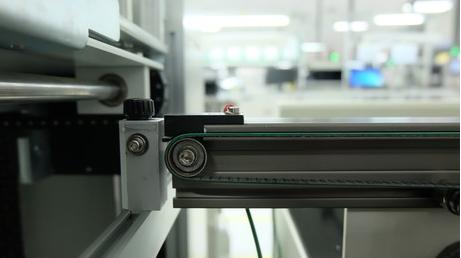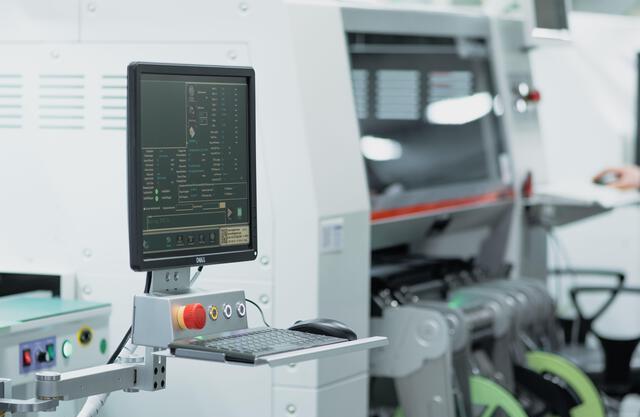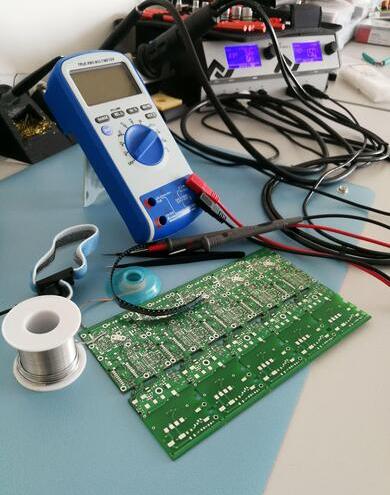Content Menu
● Understanding SMT Spare Parts
● Importance of Quality in SMT Spare Parts
● Factors to Consider When Choosing SMT Spare Parts
● Common SMT Spare Parts and Their Functions
● Maintenance and Replacement of SMT Spare Parts
>> Preventive Maintenance Strategies
>> Signs That Spare Parts Need Replacement
● The Role of Technology in Selecting SMT Spare Parts
>> 1. Inventory Management Systems
>> 2. Predictive Maintenance Tools
>> 3. Online Platforms for Sourcing Parts
>> 4. Digital Twins
● Training Staff on Proper Use of Spare Parts
>> 1. Understanding Component Specifications
>> 2. Best Practices for Installation
>> 3. Regular Training Updates
● Conclusion
● FAQ
>> 1. What are SMT spare parts?
>> 2. Why is quality important in SMT spare parts?
>> 3. How do I choose the right SMT spare parts?
>> 4. What are common types of SMT spare parts?
>> 5. How often should I replace SMT spare parts?
Choosing the right SMT (Surface Mount Technology) spare parts is essential for ensuring the efficiency and productivity of your production line. With the increasing complexity of electronic assembly processes, selecting appropriate spare parts can significantly impact operational performance. This article will delve into the key considerations and steps involved in selecting the right SMT spare parts, ensuring optimal performance, and minimizing downtime.

Understanding SMT Spare Parts
SMT spare parts are critical components that facilitate the smooth operation of SMT machines. These parts include:
- Nozzles: Used for picking and placing components on printed circuit boards (PCBs).
- Feeders: Supply components to the pick-and-place machine.
- Filters: Maintain air quality and prevent contamination in the assembly process.
- Belts and Gears: Ensure smooth mechanical operations.
- Sensors: Monitor and control various machine functions.
- Circuit Boards: Essential for the electronic functions of SMT machines.
- Valves: Control fluid flow in pneumatic systems.
Each part plays a specific role in the assembly process, and their quality can significantly impact overall production quality.
Importance of Quality in SMT Spare Parts
The quality of SMT spare parts is vital for maintaining the integrity of the production process. Inferior parts can lead to:
- Increased rejection rates
- Production delays
- Higher maintenance costs
Investing in high-quality SMT spare parts enhances production efficiency, reduces long-term costs, and ensures that machines operate at their optimal capacity. High-quality components lead to fewer breakdowns and less frequent replacements, contributing to a more streamlined production line.
Factors to Consider When Choosing SMT Spare Parts
When selecting SMT spare parts, several factors should be taken into account to ensure you make informed decisions:
1. Compatibility: Ensure that the spare parts are compatible with your existing equipment. Incompatible parts can cause malfunctions and damage to machines.
2. Reliability: Choose parts from reputable manufacturers known for their reliability and durability. Researching supplier backgrounds can help identify reliable sources.
3. Cost-effectiveness: While quality is paramount, it is also essential to consider cost-effectiveness. Balance between quality and budget is key; sometimes, spending a little more on a reliable part can save significant costs in repairs and downtime.
4. Availability: Ensure that the parts are readily available to avoid prolonged downtime during replacements. Suppliers with good inventory management can provide quicker access to necessary components.
5. Technical Support: Opt for suppliers who offer excellent technical support and after-sales service. Having access to knowledgeable support can help troubleshoot issues quickly and efficiently.
6. Warranty and Return Policy: Check if the supplier offers warranties or return policies on their products. This can provide peace of mind in case of defective items or if they do not meet your expectations.
7. User Reviews and Recommendations: Look for user reviews or seek recommendations from industry peers regarding specific brands or suppliers. This feedback can provide insights into the performance and reliability of different spare parts.
Common SMT Spare Parts and Their Functions
Understanding common SMT spare parts and their functions can aid in making informed choices:
- Nozzles: Critical for picking up components accurately during placement. Different nozzles are designed for various component sizes and types, so selecting the right nozzle is essential for precision assembly.
- Feeders: Essential for delivering components to the pick-and-place machine in a timely manner. There are various feeder types, including tape feeders, tray feeders, and tube feeders, each suited for specific component formats.
- Filters: Help maintain clean air within machines, preventing contamination that could affect assembly quality. Regularly replacing filters is crucial for ensuring optimal air quality in high-speed environments.
- Belts and Gears: Facilitate smooth movement within machines, reducing wear over time. These mechanical components must be selected based on their durability under continuous operation.
- Sensors: Provide feedback on machine operations, ensuring that all processes are functioning as intended. Sensors detect misalignment or component presence, allowing for real-time adjustments during production.

Maintenance and Replacement of SMT Spare Parts
Regular maintenance and timely replacement of SMT spare parts are crucial for preventing unexpected breakdowns. Implementing a preventive maintenance schedule can help identify worn-out parts before they cause significant issues.
Preventive Maintenance Strategies
To maintain your SMT machinery effectively:
- Conduct regular inspections of all critical components.
- Replace worn-out nozzles, belts, or gears based on usage frequency rather than waiting for failure.
- Keep an inventory of essential spare parts to minimize downtime during replacements.
Signs That Spare Parts Need Replacement
Certain indicators suggest when it's time to replace SMT spare parts:
- Decreased performance or accuracy in component placement.
- Unusual noises or vibrations during machine operation.
- Frequent error messages or malfunctions reported by sensors.
By staying vigilant about these signs, manufacturers can proactively manage their equipment's health.
The Role of Technology in Selecting SMT Spare Parts
Advancements in technology have transformed how manufacturers select and manage SMT spare parts. Here are some ways technology aids this process:
1. Inventory Management Systems
Modern inventory management systems allow manufacturers to track spare part usage accurately. These systems help maintain optimal stock levels, ensuring that critical components are always available when needed.
2. Predictive Maintenance Tools
Predictive maintenance tools utilize data analytics to forecast potential failures based on historical performance data. By analyzing trends in equipment usage, these tools enable manufacturers to replace parts before they fail, thereby minimizing unplanned downtime.
3. Online Platforms for Sourcing Parts
Online marketplaces have emerged as valuable resources for sourcing SMT spare parts. These platforms provide access to a wide range of suppliers, allowing manufacturers to compare prices, read reviews, and evaluate product specifications efficiently.
4. Digital Twins
Digital twin technology creates virtual replicas of physical assets, enabling manufacturers to simulate performance under various conditions. This simulation helps identify potential issues with specific spare parts before they affect production lines.
Training Staff on Proper Use of Spare Parts
Training personnel on the proper use and maintenance of SMT spare parts is crucial for maximizing their lifespan and effectiveness:
1. Understanding Component Specifications
Staff should be trained to understand the specifications of different spare parts, including compatibility with various machines and operational parameters.
2. Best Practices for Installation
Proper installation techniques should be emphasized to avoid damaging new components during replacement processes.
3. Regular Training Updates
As technology evolves, regular training updates should be provided to keep staff informed about new products or changes in best practices regarding maintenance and operation.
Conclusion
Choosing the right SMT spare parts involves careful consideration of various factors such as compatibility, reliability, cost-effectiveness, availability, technical support, warranty policies, user reviews, and advancements in technology. By investing in quality components and maintaining a regular maintenance schedule while leveraging modern tools like inventory management systems and predictive maintenance technologies, manufacturers can ensure the smooth operation of their production lines while minimizing downtime. A strategic approach to selecting and managing SMT spare parts not only enhances production efficiency but also contributes to long-term cost savings.

FAQ
1. What are SMT spare parts?
SMT spare parts are components used in surface mount technology machines that ensure proper functioning and efficiency during electronic assembly processes.
2. Why is quality important in SMT spare parts?
Quality is crucial because inferior parts can lead to production delays, increased rejection rates, and higher maintenance costs, ultimately affecting overall productivity.
3. How do I choose the right SMT spare parts?
Consider factors such as compatibility with existing equipment, reliability from reputable manufacturers, cost-effectiveness, availability for quick replacements, technical support from suppliers, warranty options, and user reviews when choosing SMT spare parts.
4. What are common types of SMT spare parts?
Common types include nozzles, feeders, filters, belts, gears, sensors, circuit boards, and valves—all essential for efficient operation in SMT machinery.
5. How often should I replace SMT spare parts?
The replacement frequency depends on each part's wear and tear; however, implementing a regular maintenance schedule helps determine when specific components need replacement based on their condition.




















